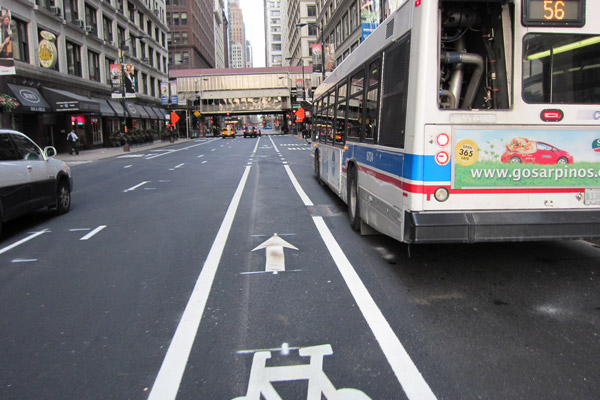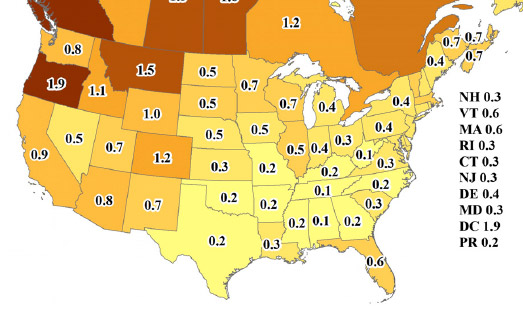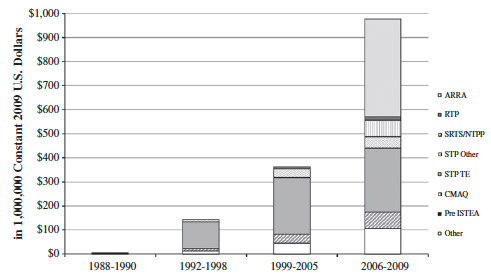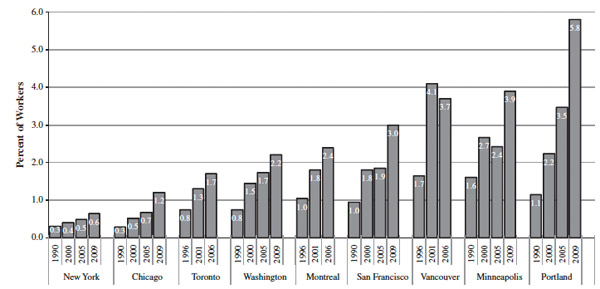
At the Washington Post, Brad Plumer calls attention to a new study that correlates an increase in city bike lanes with an increase in bike traffic. Which should only make sense: one of the basic rules of transportation, at least as far as roads, is that building more routes increases use more than it decreases congestion. If you build them, they will come, etc. But the strength of the correlation was surprising:
f that sounds overly obvious, the authors do note that previous research was somewhat scattered on this question. A few studies had found that more bike lanes in a city were associated with more cycling, though it was unclear which was causing which. Perhaps cities were building bike lanes because they already had a group of devoted cyclists. And this causation question still hasn’t been fully settled, but Buehler and Pucher’s regression analyses — going through a dataset of 90 of the 100 largest U.S. cities — suggest that the relationship between bike lanes and cycling is quite robust.
The authors didn't look deeply into weather, but in the cities they focused on, the correlation wasn't as strong as you might think:
Our dataset shows that cycling levels are lower in cities with more days per year with temperatures of 90 degrees F or higher and more annual precipitation. We found no statistically significant relationship between the number of cold days per year and bike commuting.
Minneapolis has a similar but more harsh climate, yet it has a much higher percentage of bike commuters than Chicago (3.9 percent in 2009 to 1.2 percent).
One thing that does correlate: distance west of the Atlantic. From 2006-2008, the only cities east of the Mississippi in the top ten by percent of bike commuters were Madison, Wisconsin (second, at 3.9 percent) and Washington, D.C. (eighth at two percent). It's definitely a pattern (2005-2009 statistics), as the authors of "Bicycling renaissance in North America? An update and re-appraisal
of cycling trends and policies" (PDF) found:

The authors also noted that, despite the increase in bike commuting, it's actually gotten safer—which matches with observations about bike density and safety between Europe and the U.S. The more bikes there are, the more drivers are aware of them, and the safer it is for everyone involved.
One big reason for the increase in bike commuters? Federal investment for biking and walking:

And increases across major cities have followed:

Chicago is still well behind many of its peers—but it's also quite large compared to many of them, and as you can see with New York City, it takes a lot more to budge the percentages for such a large population (if you just looked at Brooklyn and Manhattan, New York would have a higher percentage than Chicago). The key, as it is with cars—something that's also gotten a lot safer in recent decades—is creating demand through infrastructure.
Photograph: Chicago Bicycle Program (CC by 2.0)


